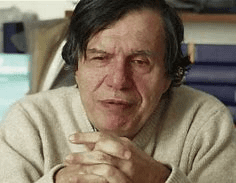The Nobel Prize for Physics has this year been awarded to three climate scientists. Syukuro Manabe of Princeton University and Klaus Hasselmann of the Max Planck Institute for Meteorology in Hamburg, who share half of the prize, worked in the 1960s and 1970s on the physical modelling of the Earth’s climate and how we influence it, which led to early predictions of global warming.

The awarding body, the Royal Swedish Academy of Sciences, said that Manabe’s work in the 1960s laid the foundation for today’s understanding of the Earth’s climate. Manabe’s reaction to his award was that it reflected the Academy’s recognition of climate change, which he said will continue to intensify with more droughts, torrential rains, warming of land masses and melting of polar ice. “Already there are many phenomena showing climate change is happening,” he said. “And I think that is the reason why the theme of climate change was selected for the award this time.”

Of Hasselmann, the Academy explained that models developed by him in the 1970s helped to prove that mankind’s carbon dioxide emissions cause rising temperatures in the atmosphere. “Scientists have spent decades urging climate change action on an often-reluctant society,” commented Hasselmann. “People are not willing to accept the fact that they have to react now for something that will happen in a few years.”

The other half of the prize has been awarded to Giorgio Parisi of Sapienza University of Rome. In the 1980s he demonstrated how hidden patterns can be detected in the disorder and fluctuations of complex systems, including climate. “Giorgio Parisi is rewarded for his revolutionary contributions to the theory of disordered materials and random processes,” said the Academy.
Climate scientists have welcomed the awards. “They were pioneers in this area and personal role models for me,” said Stefan Rahmstorf, a leading German climatologist. “We are now witnessing how their early predictions are coming true one after the other.”
Michael Moloney, chief executive of the American Institute of Physics, commented: “Nearly every climate model used today relies on the groundbreaking research done by Syukuro Manabe, whose pioneering work explored the interaction between radiation balance and the vertical transport of air masses, and Klaus Hasselmann, who was the first scientist to directly link weather and climate into a single model and explain why climate models can be predictable.”
“The discoveries being recognised this year demonstrate that our knowledge about the climate rests on a solid scientific foundation, based on a rigorous analysis of observations,” said Thors Hans Hansson, chair of the Nobel Committee for Physics.
Parisi had a message for world leaders attending this month’s COP26 climate conference: “It’s clear for future generations that we have to act now,” he said. “It’s very urgent that we take very strong decisions and move at a very strong pace. There are some details we still have to understand but the strength of climate change is clear.”
ACAN is delighted that these men’s research and contributions to the understanding of climate change have been recognised, albeit decades after their work was carried out. This month in Glasgow it is crucial that world leaders take their messages on board and act accordingly.
 Alton Climate Action Network
Alton Climate Action Network